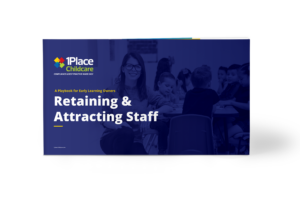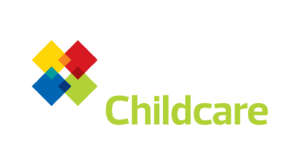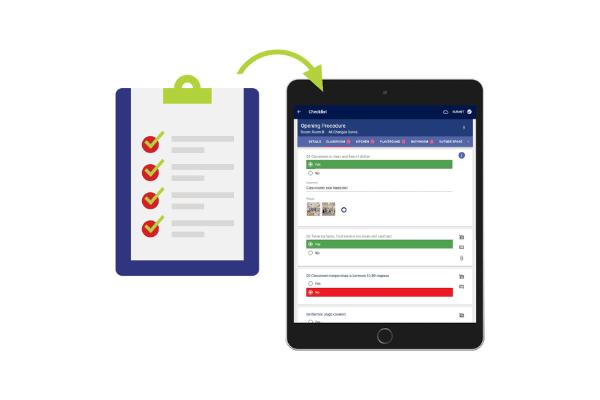 While every childcare centre director wishes for ‘practically perfect’ performance, most know there is a learning curve involved in getting people up to standard. An innate magic, akin to Mary Poppins, might exist in some but most require a measured approach to bring out their best – and that’s where Key Performance Indicators come in.
While every childcare centre director wishes for ‘practically perfect’ performance, most know there is a learning curve involved in getting people up to standard. An innate magic, akin to Mary Poppins, might exist in some but most require a measured approach to bring out their best – and that’s where Key Performance Indicators come in.
Rachel Supalla, Early Childcare Business Coach and CEO of Discovery Kidzone, recently shared her insights into how Key Performance Indicators (KPIs) can be used to help your people bring their A-game to the workplace. All staff, from directors to classroom teachers and aids, can benefit from having clear accountability and expectations to help them improve.
What exactly are KPIs?
KPIs are a set of benchmarks for each role, which is a check and balance against best practice. Rachel has been using 1Place Childcare to organise and create a system to keep track of her KPIs, which has helped attract and retain quality staff at her centres. “Once you get all this set up and are comfortable with it, it’s going to give you more freedom as an owner or a director,” she says.
At a high level, the 3 key metrics that Rachel focuses on are:
- Policies
- Systems
- Accountability
Leadership accountability
Rachel lives by the words of leading childcare business expert Kris Murray, who says that it is important to ‘inspect what you expect’ when it comes to running a childcare centre. Rachel saw that she was using her time putting out figurative fires at her centers because she had no clear systems in place for staff to deal with problems without involving her.
By carefully looking at her centers’ best practice processes, with licencing standards being the baseline, Rachel was able to set her expectations and, using 1Place’s smart dashboards, use these to create her KPIs.
Scoring KPIs
As well as ensuring licencing standards are being met, it is important to define what each staff member’s non-negotiable attributes and skills are, then assign a score to each point. For essential points, such as ‘name-to-face’ recognition for a teacher, the score will be higher.
This also means that points are deducted when essential attributes are not achieved. Rachel uses ‘all, some or none’ as a scoring mechanism for staff members, meaning staff can identify and consider whether they always, sometimes or never carry out these processes, allowing them to then see where they can improve.
What to measure
Rachel created her KPI system by editing 1Place’s standard checklists to align with her center’s processes and values. She believes that a center’s core values are most important to clarify and suggests that you cannot coach character, so choosing people that align with your values will mean employing trainable staff.
Using core values as a base, Rachel suggests working through each of the processes in your centres and creating scores for each one. Then use these to make a scorecard for each role. For a Director, the scorecard might measure their ability to create sales and the size of a center’s waitlist and roll, while a teacher’s scores will be based on their interactions with children, their ability to impart learning, and their safe handling of care.
The benefit of making these scorecards is not to punish the Director for a lack of sales, for example, but to clearly see where improvements can be made and to reward them for the areas that are getting the most traction.
KPI categories
Some of the categories tracked in Rachel’s KPIs include proficiency and reliability factors, such as professionalism, attendance and class planning. She also looks into staff goals and dreams, to see what drives her employees. This helps for both Rachel and her staff to see what they need to focus on. “If you’re happy in life, you’re happy in work,” she says.
She also places a focus on documentation, using questions around how staff are showing parents what the children are learning. General processes are assessed too, such as good Health & Safety knowledge and practice.
1Place Childcare makes it achievable
“When we set up our system through 1Place, it made measurement and management of expectations achievable because it’s broken down and staff can understand it better,” she says. “When staff first did their score many were surprised they scored so low and I said ‘but it’s okay because look, now we can see where you need to improve and where you need coaching and training and we can help you.’”
Rachel says that it is important to remember that this system is a way to support staff through their growth. “My thought is always, how do you give them a goal to reach and how are you helping them and mentoring them?”
Awarding bonuses – using 1Place dashboards for concrete proof of performance
Rachel uses the promise of bonuses to help with motivation for completing the scorecards. As well as rewarding high scores, bonuses are also awarded for long service and for mentoring others. If a staff member consistently achieves under 70% on their scorecard, they are placed on a performance improvement plan to help them get up to scratch.
This elevates employee satisfaction as staff feel seen, which in turn helps with retention rates for what Rachel calls her ‘A players’, those who are committed about their roles and want to do better.
Track trends over time
Rachel recommends consolidating the data from each staff member’s scorecard and using this to evaluate performance over time. This is also a way to ensure that your expectations are not unrealistic. If a competent staff member consistently scores low, your KPIs may need adjusting.
Charting assessment data shows where improvements need to be made for the entire centre. Compare data on each teacher by checking their self assessment scores with the scores given to them by their managers, to see if there are any inconsistencies. It’s also helpful to check on the scores of all the teachers as a whole to see the health of the centre in its entirety.
How to keep your ‘A players’
When faced with the current hiring crisis in the USA, Rachel prioritised the creation of her scorecard system within 1Place as a means of retaining her ‘A players’. “I saw that I was going to lose my A players and that my D and F players were going to bring us down,” she says. “With a focus on accountability and expectations, my A players were happy and helped to bring others in. This also elevated my D and F players. They will either sink or swim. If they’re out, that’s a blessing.”
Good staff will be motivated by the big picture of their growth within their roles and within the centre – as well as by the reward of bonuses.
KPIs equal growth
Rachel firmly believes that KPIs are core to growth. When used consistently and managed well, this process results in better and more competent staff, who are satisfied in their positions, know what they need to do and where they can improve, and will carry on working towards achieving these goals, resulting in better centres.
If you need help creating KPIs for your centres, 1Place Childcare can set up a one-on-one meeting to help establish the system and to show you how to make it work.
You may be interested in some of our other content

FREE Download: A Playbook for Early Learning Owners
Retaining & Attracting Staff
We know that being understaffed can have a significant impact on your business. It can lead to reduced capacity, and revenue, and ultimately affect the quality of care that you provide to children. That’s why we’ve put together a playbook, with leaders in the sector, that provides you with actionable advice.




